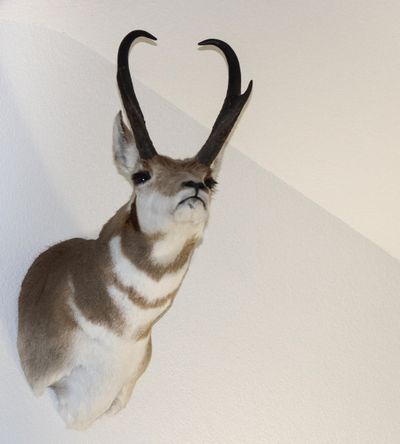Jack McNeel: Evolution of a lifelong hunter and nature lover

Last January, Eli Francovich ran an article in The Spokesman-Review concerning his first year of hunting. He wrote of the early mornings, cold weather, days without success and questioned, “Why was I doing this?”
I recalled my own early hunts many years ago and how those feelings tend to change as you age. For me, those early hunts and interest in nature began soon after World War II. That led to a long career with Idaho’s Fish & Game Department and coordinating hunter education throughout northern Idaho plus heading up the nongame program in this region.
The hunter-ed program points out how and why hunters change as they age. Most beginning hunters need to harvest something for the hunt to be a success. This changes as one ages and hunters now might pass up smaller animals while waiting for a trophy class animal. The final stage is usually a success if they simply enjoy hunting and camping with friends, whether an animal is taken or not. This doesn’t apply to everyone, but is true for many hunters.
I still have my first gun, a Daisy BB gun. I spent many hours crouching in a shed in the middle of a pigpen waiting for English sparrows to land within range. If nothing else, it taught me patience. It also taught me to wash up before returning home!
During those years I spent hours walking along cattail-choked drain ditches observing frogs, snakes, ground squirrels and birds in the farmland country of southwest Idaho where I grew up. This instilled in me a lifelong interest in wildlife and the outdoors and led to two college degrees in biology.
When I reached the age to buy a hunting license, it marked a change in my life. It was important to “fill my tag.” At that time, the mule deer population in Owyhee County was at a high level. My sisters-in-law had a ranch on Cow Creek, downstream from the old mining town of Silver City. My first mule deer was taken there. I mounted the antlers on a wooden plaque and can look up at it now, above my desk. It brings back memories of the many days I enjoyed in that area, hunting, fishing or just exploring.
This brings up the subject of “memory trophies.” Perhaps not large animals, but animals that bring wonderful memories of days spent with people important to me and the events of the day when I collected that trophy.
My father died when I was 14 and my brother-in-law took over as a surrogate big brother, helping me become a hunter and fisherman. My senior year in high school I traveled to the Pahsimeroi Valley where he lived. He and I had both drawn antelope permits and luckily both got good-sized antelope bucks. I kept that set of antlers and later had a full shoulder mount made. It hangs in my living room now, another memory trophy. It was a wonderful hunt, but more important, it was the last time I saw my brother-in-law alive. He was a geologist working for a mining company. A misfortune cut the oxygen off in the mine. He couldn’t get out and died.
The “memory antelope” holds many thoughts of that man and that hunt. A week never passes that I don’t look at the mount and think of that hunt and many other wonderful days I’d spent with him. My only other mount is a whitetail deer. It’s a nice mount, like the other two, but none is record-sized. My teenage son was with me and helped pack the deer out. Those memories flood back when I look at it, thus a “memory trophy.”
Many people still rely on wild game to supplement food from the grocery. Native Americans have depended on this meat and still do. It wasn’t taken in a lighthearted way and many would sing a song of praise and thanked the spirit of the animal, thanking it for providing sustenance the hunter and his family needed. Even today, I know of hunters who kneel and pray for the soul of the animal they just killed. I’ve been known to do that myself.
Nonhunters often wonder how hunters can kill such beautiful creatures. I understand that and don’t quarrel with them, but if managed correctly, populations can actually be maintained at a higher level with hunting. A severe winter can greatly reduce animals through starvation. Reducing the population via hunting gives remaining animals a better chance of survival, thus more young born in the spring. This can provide more animals for the nature lover, photographer and hunter, most of whom are nature lovers.